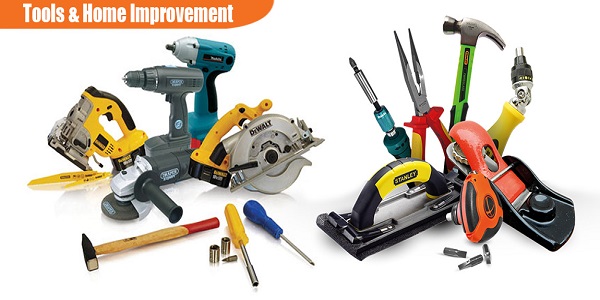Sidewinder and worm drive saws are popular among woodworkers. Each type has unique features and advantages.
Comparing these tools can help users make informed decisions. Understanding their differences aids in choosing the right saw for specific tasks. In this blog post, we’ll explore the sidewinder vs worm drive saws. These saws cater to different needs and preferences in woodworking.
Sidewinder saws are often lighter and more compact, suitable for overhead cuts. Worm drive saws offer more torque and are ideal for heavy-duty projects. Knowing the strengths of each helps users select the best tool for their work. We’ll dive into their characteristics, pros, and cons, helping readers understand which saw fits their needs. Stay tuned as we uncover the details of these two powerful tools.
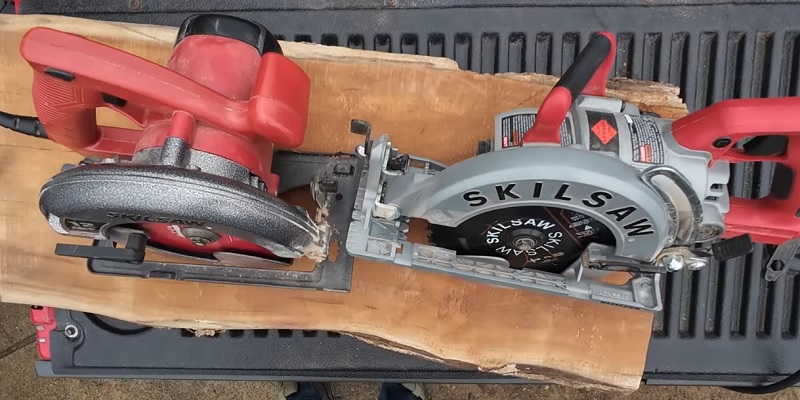
Introduction To Circular Saws
Explore the differences between sidewinder and worm drive circular saws. Sidewinders are lightweight and fast, ideal for home projects. Worm drives offer more power and torque, perfect for heavy-duty tasks. Both have unique benefits depending on your cutting needs.
Circular saws are a cornerstone in the world of woodworking, renowned for their precision and versatility. Whether you’re a seasoned carpenter or a DIY enthusiast, understanding the different types of circular saws can significantly influence your work’s quality and efficiency. Among these, Sidewinder and Worm Drive circular saws stand out, each with unique features that cater to specific needs and preferences.
Brief History
Circular saws have a fascinating history that dates back to the late 18th century. They were first used in sawmills, revolutionizing the way wood was cut and processed. Initially powered by water, these saws were the epitome of innovation at the time.
As technology advanced, so did the design and functionality of circular saws. By the 1920s, electric-powered circular saws became a household tool, making woodworking more accessible to the masses. Their evolution reflects the growing demand for efficiency and precision in woodcutting.
Importance In Woodworking
Circular saws are indispensable in woodworking for several reasons. They provide clean, straight cuts essential for any project, from crafting furniture to building a deck. Their ability to cut through various materials like plywood, hardwood, and even metal, makes them versatile.
For many woodworkers, the choice between a Sidewinder and a Worm Drive saw can impact their workflow and project outcomes. A Sidewinder is typically lighter and faster, making it ideal for quick, repetitive cuts. Conversely, the Worm Drive offers more torque, perfect for tougher, more demanding tasks.
Have you ever wondered how choosing the right saw could transform your woodworking projects? Selecting the appropriate saw not only enhances your efficiency but also your creativity. Understanding your tool is the first step toward mastering your craft.
Defining Sidewinder Saws
In the world of power tools, sidewinder saws hold a prominent place. They’re known for their compact design and powerful performance. Professionals and DIY enthusiasts often rely on these saws for precise cuts. Understanding their design and features can help you choose the right tool for your needs.
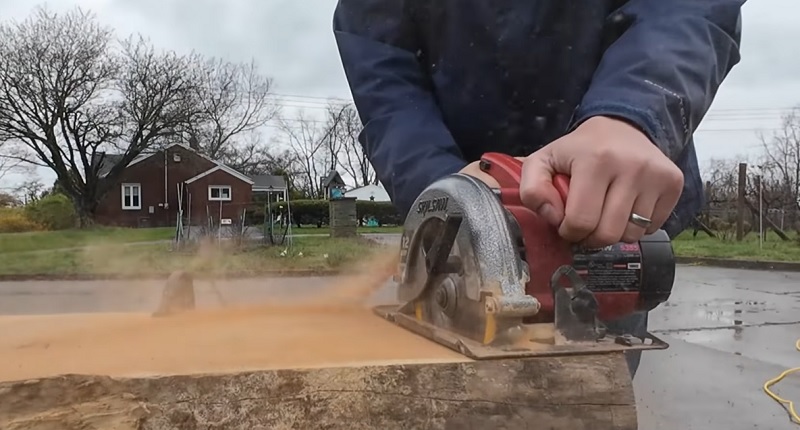
Basic Design
Sidewinder saws have a motor positioned parallel to the blade. This design makes them compact and lightweight. The direct-drive mechanism connects the motor directly to the blade. This ensures fast blade speed, offering smooth and efficient cutting. These saws are easy to handle, even in tight spaces.
Key Features
Sidewinder saws are known for their high RPM. This allows them to cut through wood quickly. Their lightweight design reduces user fatigue during long tasks. Most models include an adjustable bevel feature. This helps in making angled cuts. They also come with a blade guard for added safety. A clear sightline is another important feature. It helps users make accurate cuts with ease.
Understanding Worm Drive Saws
Choosing between sidewinder and worm drive saws depends on your cutting needs. Sidewinders are lighter, ideal for quick tasks. Worm drive saws offer greater torque, perfect for heavy-duty cutting. Both have unique benefits, making them suitable for different projects. Understanding their features helps in selecting the right tool.
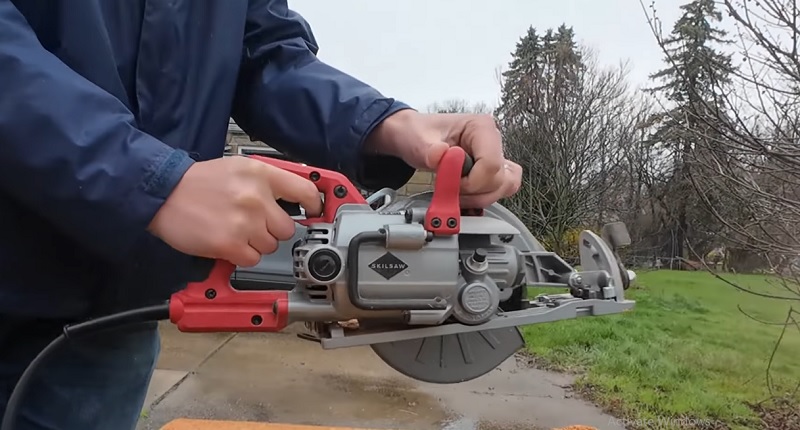
Worm drive saws might seem complex at first glance, but they offer a unique blend of power and precision. These saws are favored by professionals for their ability to handle heavy-duty tasks with ease. If you’ve ever wondered why a worm drive saw might be the right choice for you, understanding their mechanism and features can provide clarity.
Unique Mechanism
The mechanism of a worm drive saw is distinct and fascinating. At the heart of it is the worm gear, which is positioned at a 90-degree angle to the motor. This setup allows the saw to deliver more torque, making it ideal for tougher cuts.
Think of the worm gear like the gears on a bicycle. Just as lower gears make pedaling uphill easier, the worm gear makes cutting through dense wood more manageable. This unique configuration ensures that the saw doesn’t stall easily, even under heavy load.
Distinct Features
Worm drive saws come packed with features that set them apart. Their motor is typically located at the rear, giving the tool better balance and control. This design is particularly helpful when you’re cutting through thick materials and need stability.
Another notable feature is the longer blade reach. This allows you to make deeper cuts without hassle. If you’ve ever struggled with making long, straight cuts, the extended reach can be a game-changer.
Consider the weight as well. While worm drive saws are heavier than their sidewinder counterparts, this heft can actually work to your advantage. The added weight reduces vibration, providing smoother cuts and reducing strain on your arms.
Have you ever felt your saw slipping during a cut? Worm drive saws often come with a built-in hook, letting you hang the saw on a nearby rafter or workbench. This simple feature offers convenience and safety, especially when working on elevated surfaces.
Does the precision and power of a worm drive saw align with your cutting needs? Whether for professional use or DIY projects, understanding these features can help you make an informed choice.
Sidewinder vs Worm Drive Performance Comparison
In the world of circular saws, the Sidewinder and Worm Drive are popular choices. Each offers unique benefits and performs differently. Understanding their performance differences helps decide which suits your needs better.
Power And Torque
Power is crucial for cutting through tough materials. Sidewinders typically have less power but are lighter. This makes them easier to handle. Worm Drives, on the other hand, boast higher power and torque. They tackle heavy-duty tasks with ease. These saws cut denser materials without stalling. Professionals favor them for demanding jobs.
Speed And Efficiency
Speed affects how quickly a saw completes a task. Sidewinders often have higher blade speeds. This means faster cuts on lighter tasks. They are efficient for quick, repetitive cuts. Worm Drives are slower but more precise. Their efficiency shines in complex or detailed work. Each saw serves different purposes depending on the task. Choosing the right one depends on your specific needs.
Sidewinder vs Worm Drive Design And Ergonomics
When choosing a circular saw, design and ergonomics play a crucial role. They affect the ease and comfort of use during tasks. Two popular types, the Sidewinder and Worm Drive, offer distinct design features. Understanding these differences helps in selecting the right tool for your needs.
Weight And Balance
Sidewinder saws usually weigh less. This makes them easier to handle during extended use. They are often preferred for overhead tasks due to their lighter weight. In contrast, Worm Drive saws are heavier. Their weight provides stability during cuts. This feature suits jobs that require more control. The balance of a Worm Drive saw aids in making precise cuts.
Handle Comfort
The handle design impacts user comfort significantly. Sidewinder saws often have a rear handle. This design supports easy maneuverability. It suits users with smaller hands as well. Worm Drive saws typically feature a top handle. This allows a firm grip for powerful cutting tasks. The handle design in both saws aims to reduce user fatigue.
Sidewinder vs Worm Drive Cutting Precision
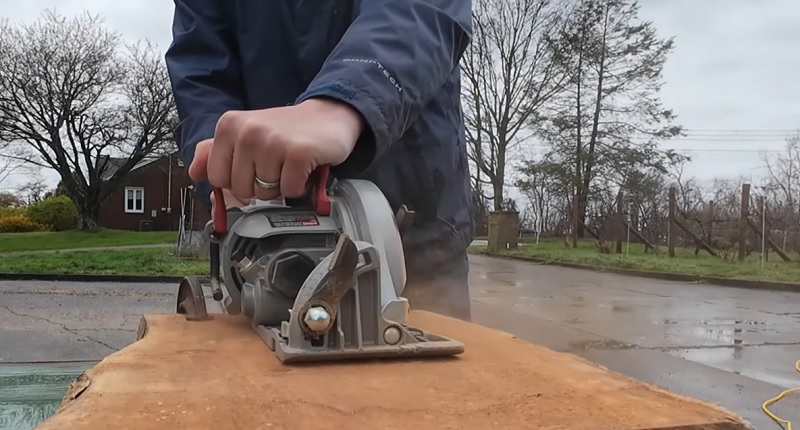
Sidewinder and worm drive saws differ in cutting precision. Sidewinder saws excel in portability, ideal for quick cuts. Worm drives offer greater torque, perfect for heavy-duty tasks requiring accuracy. Each type has unique strengths for specific projects.
When it comes to choosing between a sidewinder and a worm drive saw, cutting precision often becomes a decisive factor. If you’re working on a project that demands high accuracy, understanding the differences in cutting precision between these two types of saws can make or break your success. Cutting precision is not just about getting the job done; it’s about getting it done right. Let’s dive into how these saws differ in terms of accuracy levels and blade visibility.
Accuracy Levels
Sidewinders are known for their lightweight and fast-spinning blades. This makes them great for jobs where speed is more critical than pinpoint accuracy. However, the lightweight nature can sometimes lead to slight deviations, especially if you’re not steady-handed.
Worm drives, on the other hand, offer a different kind of precision. Their heavier build gives them stability, which can enhance accuracy. Imagine cutting through a thick piece of wood with the steady hand of a worm drive. The weight works in your favor, reducing vibrations and keeping cuts straight.
Have you ever found yourself needing to cut multiple pieces at exact lengths? The worm drive’s stability ensures each cut mirrors the last, making it ideal for repetitive tasks requiring precision.
Blade Visibility
Blade visibility is another crucial aspect of cutting precision. With sidewinders, the blade is often positioned on the right side. This can make it challenging to see the cutting line if you’re right-handed. Have you ever had to awkwardly lean over just to see your mark? It’s not the most efficient way to work.
In contrast, worm drives usually have the blade on the left side, providing better visibility for right-handed users. This allows you to keep a clear view of the cutting line, ensuring you follow it precisely.
Imagine having a clear line of sight to your cutting mark every time. This not only boosts your confidence but also speeds up the process, as you’re not constantly adjusting to get a better view.
So, if cutting precision is your top priority, consider these aspects of accuracy levels and blade visibility. Which saw aligns better with your project needs?
Sidewinder vs Worm Drive Durability And Maintenance
Choosing the right saw involves understanding its durability and maintenance needs. The Sidewinder and Worm Drive are popular choices among professionals and DIY enthusiasts. Each has unique build qualities and maintenance requirements. Knowing these can help make an informed decision.
Build Quality
The Sidewinder saw is lighter due to its compact design. This makes it easier to handle for smaller jobs. Its motor sits beside the blade, reducing weight. But, its components may wear out faster under heavy use.
The Worm Drive saw is heavier and more robust. Its motor aligns with the blade, offering more torque. This design makes it suitable for heavy-duty tasks. Its rugged build often translates to a longer lifespan.
Ease Of Upkeep
Maintaining a Sidewinder saw is straightforward. Regular cleaning and blade checks are usually enough. Its open design allows for easy access to parts.
The Worm Drive saw needs more care. Regular oiling of the gears is crucial. This maintains its smooth operation and extends its life. Checking the oil level frequently is recommended.
Both saws benefit from regular blade sharpening. A sharp blade ensures cleaner cuts and less strain on the motor. Keeping the saw free from dust and debris helps in maintaining performance.
Sidewinder vs Worm Drive Cost Considerations
Choosing between a sidewinder and a worm drive saw involves several factors. One significant factor is cost. Understanding the price and value can guide your decision.
Price Range
Sidewinder saws generally have a lower price range. They are often more affordable for beginners and DIY enthusiasts. You can find basic models at a reasonable cost. Worm drive saws, on the other hand, usually cost more. Their complex design contributes to the higher price. Professional-grade models can be quite expensive.
Value For Money
Sidewinder saws offer good value for basic tasks. They are efficient for light to moderate woodworking projects. If budget is a concern, sidewinders are a smart choice. Worm drive saws provide excellent value for heavy-duty work. They are durable and powerful, ideal for professionals. Investing in a worm drive might be wise for extensive use.
Sidewinder vs Worm Drive Ideal Use Cases
Choosing between sidewinder and worm drive saws depends on the task at hand. Sidewinders are lightweight and perfect for overhead cuts. Worm drives excel in heavy-duty projects, offering more torque for tougher materials. Understanding these differences can help in selecting the right tool for specific needs.
The choice between a sidewinder and a worm drive can significantly impact your cutting tasks. Each saw has its unique strengths, making it crucial to understand the ideal use cases before you make a decision. Whether you are a professional or a DIY enthusiast, knowing which saw suits your needs can save you time, effort, and even money.
Best For Professionals
For professionals, precision and power are paramount. Worm drive saws excel in these areas. Their motor is positioned at the rear, providing a direct line of sight to the cut. This design offers better control and accuracy, essential for complex projects and heavy-duty jobs.
You might find that the extra weight of a worm drive adds stability, reducing vibration during cuts. If you’re working on framing, roofing, or any job requiring long hours of cutting, the worm drive’s robust build is a reliable companion.
Consider the demands of your projects. Would the added power and torque of a worm drive enhance your efficiency? If precision and heavy-duty performance are priorities, the worm drive is your go-to.
Suitable For Diy Enthusiasts
Are you tackling weekend projects or home renovations? The sidewinder might be your perfect match. Lightweight and portable, sidewinders are easy to maneuver, making them ideal for smaller tasks. Their motor is positioned on the side, which often results in a more compact design.
Imagine working on a quick fix or a straightforward cut; a sidewinder’s accessibility and ease of use shine in these scenarios. You don’t need the brute force of a worm drive for cutting plywood or trimming lumber for a new bookshelf.
Think about your comfort and convenience. Is portability more important to you than cutting through thick materials? If your projects are more about versatility and ease, the sidewinder is a great choice.
Ultimately, your choice should align with your specific needs and project demands. Reflect on the tasks you often undertake and match them with the saw that complements your style.
Final Verdict
Choosing the perfect saw can feel overwhelming. Two popular types are the Sidewinder and the Worm Drive. Each has unique features. Understanding these differences helps in making an informed decision. Let’s explore the pros and cons of each type.
Pros And Cons
Sidewinders are lighter. They offer better maneuverability. This makes them suitable for overhead cuts. They are usually more affordable. Easier maintenance is another benefit. But, they have less torque compared to Worm Drives.
Worm Drives provide more power. Their design allows deeper cuts. These saws are preferred for heavy-duty tasks. They have a longer lifespan. The downside is their weight. They can be harder to handle. They also cost more than Sidewinders.
Choosing The Right Saw: Sidewinder vs Worm Drive
Consider your project needs. Sidewinders are great for lighter tasks. They suit beginners well. Worm Drives fit professional use better. If you handle large projects, they are ideal. Think about your budget too. Sidewinders offer cost savings. Worm Drives require a bigger investment. Consider comfort and handling. Sidewinders win on mobility. Worm Drives excel in power and durability.
See Here: 10 Best Worm Drive Circular Saws with Buying Guide
Frequently Asked Questions
Is Worm Drive Or Sidewinder Better?
Choosing between worm drive and sidewinder depends on your needs. Worm drives offer more torque and durability, ideal for heavy-duty tasks. Sidewinders are lighter and more compact, suitable for quick, lighter jobs. Consider your project’s requirements to determine the best fit.
Why Use A Sidewinder Saw?
A sidewinder saw offers powerful cutting performance with a compact design. Its motor sits beside the blade, providing better balance. This makes it ideal for quick, precise cuts in various materials. Lightweight and easy to maneuver, it suits both professionals and DIY enthusiasts.
It’s a reliable choice for many carpentry tasks.
What Is The Advantage Of A Worm Drive Circular Saw?
A worm drive circular saw offers increased torque and power for cutting dense materials. Its design provides better control and precision. The motor’s rear position enhances balance, reducing fatigue during prolonged use. Ideal for heavy-duty tasks, it delivers smoother and faster cuts, improving efficiency and performance in demanding projects.
Why Do Framers Use Worm Drive Saws?
Framers use worm drive saws for their powerful torque, making cutting through dense materials easier. Their left-side blade visibility enhances precision. The longer handles provide better control during cuts. These saws are durable, ideal for heavy-duty framing tasks, ensuring efficient and reliable performance in construction projects.
Final Thoughts
Choosing between a sidewinder vs worm drive is personal. Each saw offers unique benefits. Sidewinders are lighter and easier to handle. Worm drives provide more torque for tough jobs. Consider your project needs and comfort level. Think about weight, power, and cost.
Both tools can be great choices for different tasks. Remember, practice makes perfect. Experiment with both to find your best fit. The right saw can make your work easier and more efficient. Happy cutting!


